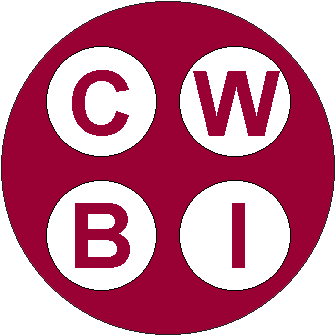


Walloon
Centre of Industrial Biology
For many years, the Walloon Centre of Industrial Biology - CWBI (University of Liege and Faculty of Agricultural Sciences of Gembloux) has carried out investigations on the potentialities of the microorganisms i.e. bacteria, fungi and yeasts. Due to its multidisciplinary pool of 60 researchers and technicians, the CWBI has achieved a certain know-how in the pharmaceutical, fermentation and environmental domains of the biotechnologies. Theoretical investigations and fundamental as well as applied research programmes have been designed and implemented on the selection and biochemistry of micro-organisms and on the production, purification, drying and encapsulation of biomass, metabolites or chemical products.
In relation to the environment, the microbiological expertise
developed by CWBI for more than 20 years as well as lab- and
pilot-scale equipment of fermentation (up to 2000 L), filtration,
centrifugation, lyophilisation, spray-drying, ... have already
allowed to produce particularly efficient micro-organisms or enzymes
involved in many biodegradation processes such as biomass treatment
(composting, manures treatment for smell reducing), wastewater
treatment (septic tank, enzymatic lipid degradation, biosurfactant
production, ...), bioremediation of PCB and poly-aromatic
hydrocarbons in polluted soils, sulphide recovery from gypsum
industrial by-product, microbial activity developed in household
refuses landfills. Biological production of hydrogen by fermentative
microorganisms.
For the last 5 years, more than 90 research projects or industrial
contracts have been developed by CWBI. They include about 20
projects in relation with environment and 20 projects with
international cooperation. More than 60 papers in international
journals have been published, 25 of which were in relation with
environment. Five PhD are in course on environmental researches.
Furthermore, 13 inventions of the CWBI have been patented and 6
spin-off companies have been created from CWBI.

Key persons involved in the projects about environment
Prof. Thonart (1949) has more than 200 publications on fermentation, microorganisms or metabolites drying, biomass and pollution treatment, investigations of new processes, etc. He has created 5 companies on the basis of researches carried out in CWBI. Its scientific know-how is largely approved by Belgian and international authorities, universities, agro-food and environmental companies.
S. Hiligsmann (1968) is chemical engineer and has a 10 years
experience in research in biotechnological and environmental
engineering, particularly in anaerobic processes namely industrial
gypsum biodegradation to produce sulfide, investigation and model
development of biological activity and environmental impact of
landfills (in Belgium and developing countries). He is the first
CWBI researcher to develop research activities on microbial hydrogen
production combining engineering and results achieved in
fermentation and other anaerobic processes.
Relevant publications in relation to environmental researches
HILIGSMANN S., DESWAEF S., TAILLIEU X., CRINE
M., MILANDE N. and THONART Ph (1996).
Production of sulfur from gypsum as an industrial byproduct.
Applied Biochemistry and Biotechnology. Vol. 57/58, 959-969.
DESTAIN J., ROBLAIN D. and THONART Ph. (1997)
Improvement of lipase production from Yarrowia lipolytica
Biotechnology Lett., 19, 105-107.
WEEKERS, F., P. JACQUES, D. SPRINGAEL, M. MERGEAY, L. DIELS AND P.
THONART (1998) Effect of drying on bioremediation bacteria
properties. Appl. Biochem. Biotechnol. 70-72:311-322.
HILIGSMANN S., P. JACQUES and P. THONART. (1998)
Isolation of highly performant sulfate reducers from sulfate-rich
environments.
Biodegradation, 9: 285-292.
STEYER, E., S. HILIGSMANN, J.P. RADU, R. CHARLIER, J. DESTAIN, R.
DRION and P. THONART (1999). A biological pluridisciplinary model to
predict municipal landfill life. Proceedings Sardinia 99, Seventh
International Waste Management and Landfill Symposium. Cagliary,
Italy: 37-44.
Hiligsmann S., Lardinois M., Rodriguez C., Kapepula D., Mhiri F.,
Marouani L., Benzarti A., Pohl D., Chamblin J.F., Antoine J.N., Noel
J.M., Thonart P (2001). Investigation of the biological activity in
MSW landfills under dry climates (Tunisia and Haiti). Proceedings
Sardinia 01, Eight International Waste Management and Landfill
Symposium. Cagliary, Italy: 4, 131-138.
SABRI A., BARE G., JACQUES P., JABRANE A., ONGENA M., VAN HEUGEN J.,
DEVREESE B. and THONART P. (2001) Influence of moderate temperature
on myristoyl-CoA metabolism and acyl-coa thioesterase activity in
the psychrophilic antarctic yeast Rhodotorula aurantiaca. The
Journal of Biological Chemistry, 276, n°16, p. 12691-12696.
HOFMAN M. et THONART Ph. (2001) Engineering and manufacturing for
biotechnology. Kluwer Academic Publishers, Focus on Biotechnology.
LARDINOIS M., HILIGSMANN S., KAPEPULA D., RODRIGUEZ C., AND THONART
P. (2002) Atlas of MSW landfills and dumpsites in developing
countries. Proceedings "ISWA 2002 World Environment Congress and
Exhibition, Istanbul, Turkey, 2: 1167-1172
Rodriguez C., Hiligsmann S., Lardinois M., Destain J., Radu J.P,
Charlier R. and P. Thonart. (2003) Cellulose enzymatic availability
in waste refuse. Proceedings Sardinia 03, Ninth International Waste
Management and Landfill Symposium. Cagliary, Italy.
RODRIGUEZ C., HILIGSMANN S., ONGENA M., CHARLIER R. and P. THONART
(2005). Development of an enzymatic assay for the determination of
cellulose bioavailability in Municipal Solid Waste. Biodegradation;
16: 415-422
HILIGSMANN S, Lardinois M., DIABATE S.I. et P. THONART. (2006) Guide
pratique sur la gestion des déchets ménagers et des sites
d'enfouissement technique dans les pays du Sud. Edition : Institut
de l'Energie et de l'Environnement de la Francophonie (IEPF). XV,
121 pp.
